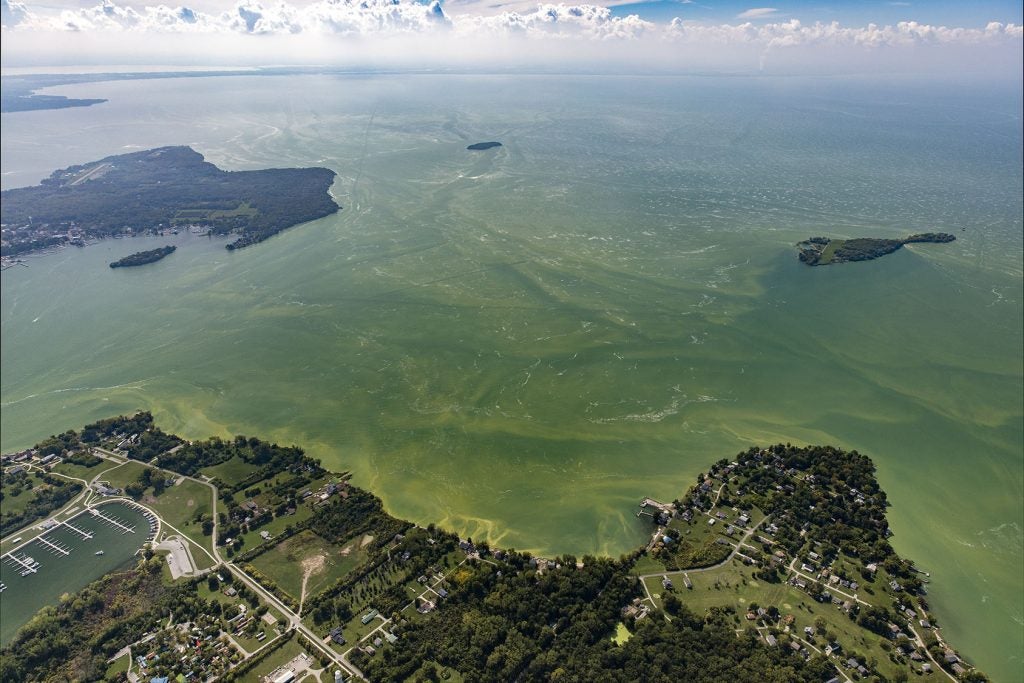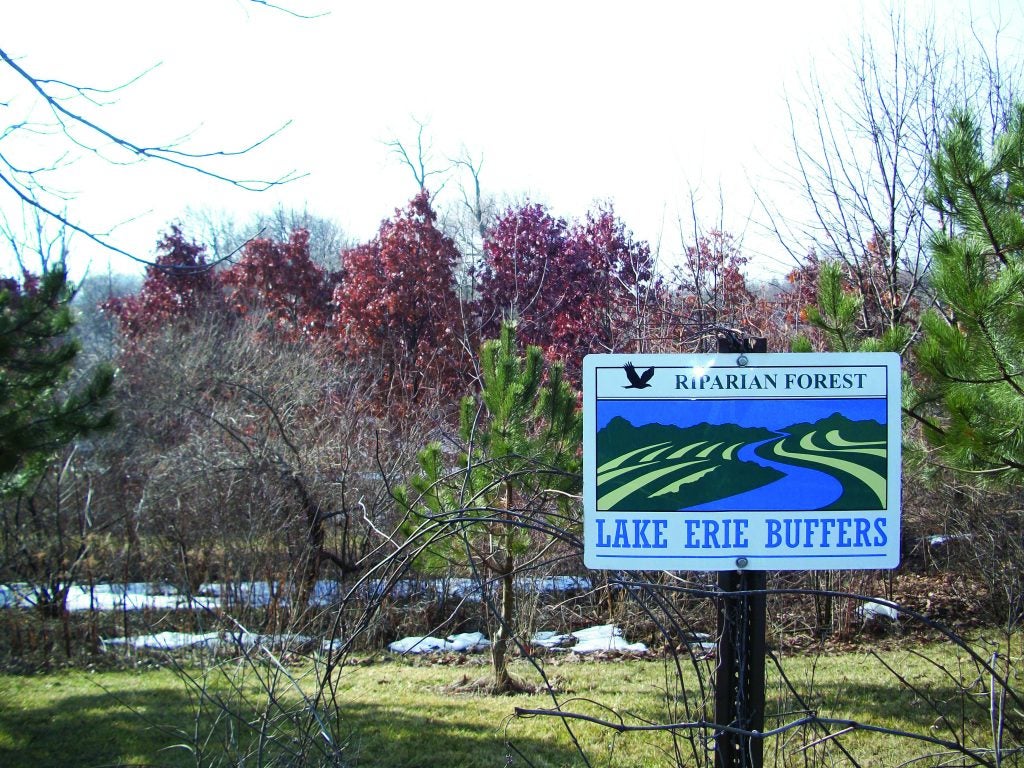Every year, blue-green algae in Lake Erie impacts lake tourism and sometimes elevates concentrations of a toxin that can harm human health and impair drinking water. While multiple sources contribute to this nutrient-fueled problem, fertilizer runoff from farms is the largest.
Cleaning up the lake requires farmers’ active participation, and many agricultural conservation partnerships with farmers are underway in the Lake Erie basin. For example, the Lake Erie Conservation Reserve Enhancement Program (CREP) helps farmers and landowners defray the costs of setting aside land and planting grasses or wildflowers, or creating wetlands to help capture and treat nutrients leaving the farm field.

Photo credit: NOAA Great Lakes Environmental Research Laboratory
The first wave of Lake Erie CREP contracts began to expire last month, highlighting a growing vulnerability for this conservation model: how to maintain conservation practices on marginal, less productive or flood-prone acres after the initial contract runs out.
This question is especially urgent for land in sensitive areas that provides disproportionately large ecosystem benefits like water filtration.
Conservation programs can spur local community partnerships
The next farm bill, currently in conference committee, could accelerate promising conservation solutions that are flexible and locally led.
The Regional Conservation Partnership Program (RCPP) excels at bringing farmers and new partners together through public-private partnerships to support projects on the ground. If it makes it into the final farm bill, a new RCPP grant program included in the Senate bill would allow more flexibility to experiment by removing red tape from the existing program.
Farmers and community partners could use the grants to find innovative ways to incentivize on-farm conservation and make measurable improvements in priority watersheds like the Lake Erie basin.

Photo credit: Erie Conservation District
These types of initiatives can spur urban-rural and upstream-downstream partnerships, enabling watershed residents who both rely on local natural resources – and experience impacts to those natural resources – to design long-term conservation solutions that make sense for them. RCPP and similar programs can serve as a bridge between government set-aside programs and successful market-based solutions.
Flexible, market-based conservation solutions
Successful ecosystem services programs – ones in which citizens who benefit from cleaner air and water help pay landowners for these services – could be a path forward.
Through the Edwards Aquifer Protection Program, citizens of San Antonio, Texas agreed to a 1/8 cent sales tax increase to fund conservation easements on land situated over the sensitive karst aquifer that supplies their drinking water. Flexible, market-based conservation solutions are needed to drive Lake Erie cleanup efforts. Share on X
The city has so far raised nearly $100 million to buy land and purchase easements on cattle ranches, or pay ranchers to forego certain uses of the land that could impact the aquifer. The ranchers are compensated for helping protect a resource for 2 million people.
This is one example of many, and it won’t work for every community.
Customizing strategies for different watersheds
Scaling up conservation solutions requires that thousands of watershed communities marshal local knowledge, culture and values to find an approach that works for them.
In the case of Lake Erie and other intensively farmed areas where water quality impacts loom large, what about designating extended crop rotations as an ecosystem service? Funding mechanisms might enable downstream residents to pay farmers to plant a non-cash crop on certain fields.
Some research shows that planting alfalfa in a field for one to two years can greatly reduce the need to fertilize the corn crop following alfalfa. Benefits accrue even after the land is put back into production.
Watershed-level planning and partnerships are happening in many places, and these are just the beginning. Government programs can help to get projects off the ground, and then innovative market mechanisms can ensure their longevity.
Locally driven, market-based projects unfolding across the landscape could complement federal government set-aside programs, providing landowners with a suite of options that allow them to make a good living by farming their best acres and dedicating the rest to ecosystem services that benefit us all.










One Comment
Heʏ there! This post ⅽouldn’t be written any better!
Reading this post reminds me of my previous room mate! He аlways kept chаtting about this.
I will forwrd this write-up to him. Fairly certain he ѡіll have a good read.
Ꭲhanks for sharing!